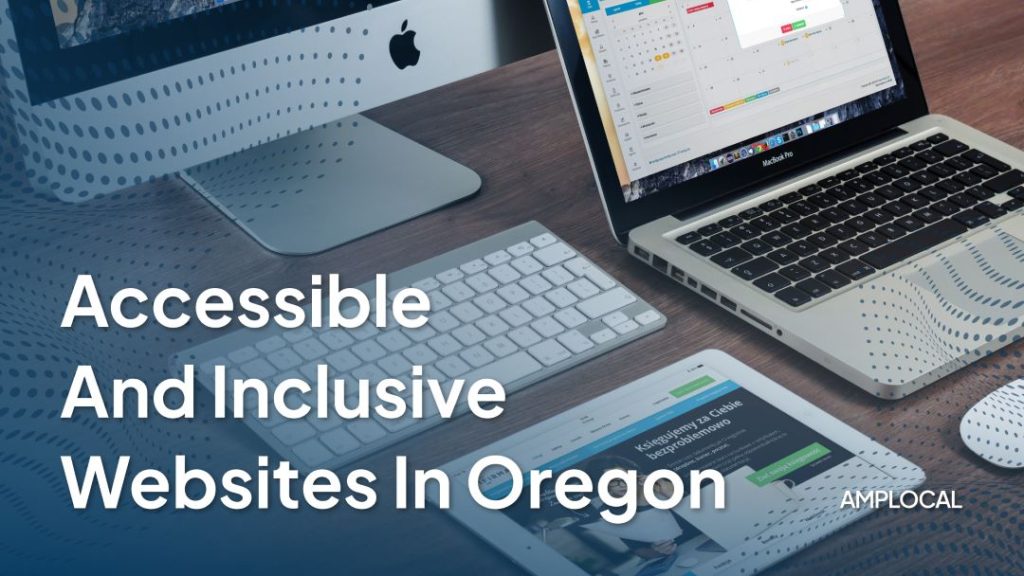In the digital landscape of Oregon, from bustling Medford to the artsy streets of Ashland, mastering user-friendly web design is more than just a trend—it’s a necessity. With the internet becoming increasingly integral to our daily lives, ensuring that websites are accessible and inclusive is not just good practice; it’s a vital part of engaging with your audience effectively. This post dives into the essentials of creating user-friendly web designs that cater to all users, providing practical advice for businesses and web designers alike.
The Heart of User-Friendly Web Design
User-friendly web design is about creating websites that are easy to navigate, understand, and use by everyone, including people with disabilities. It means designing with empathy, considering the wide range of users and their potential limitations or requirements. For businesses in Oregon, this approach not only broadens your reach but also enhances user satisfaction and loyalty, driving engagement and conversion rates up.
Key Principles to Follow
- Simplicity: Keep designs simple and intuitive. Complex layouts can confuse users, detracting from their overall experience.
- Consistency: Use consistent layouts and visual cues across all pages. This predictability helps users learn how to navigate your site faster.
- Accessibility: Incorporate accessibility features, like alternative text for images and keyboard navigation. This ensures that users with disabilities can still enjoy a full and enriching web experience.
- Responsive Design: Ensure your website looks and functions well on a range of devices, from desktops to smartphones. With mobile internet usage soaring, this is crucial for reaching users in Oregon and beyond.
Enhancing Accessibility for Oregon’s Diverse Audience
Creating an accessible website means ensuring that all potential users, including those with disabilities, can access and interact with your content without barriers. This involves adhering to Web Content Accessibility Guidelines (WCAG) and making thoughtful design choices that accommodate various needs.
Strategies for Success
- Use clear, legible fonts and provide options for enlarging text.
- Ensure sufficient contrast between your text and background to aid those with visual impairments.
- Implement easily navigable menus and clear calls to action. This is especially important for users in Oregon’s more rural areas, where internet speeds may be slower and design efficiency can make a big difference.
- Include alternative text for all images and multimedia content, allowing screen readers to describe them to visually impaired users.
User-Friendly Web Design in Action: Oregon Case Studies
Looking at successful Oregon-based websites, we see a trend towards simplicity and functionality. Businesses in Medford have leveraged user-friendly web design to cater to a broad audience, including the elderly and those with disabilities, resulting in increased website traffic and higher customer engagement rates. Similarly, Ashland’s cultural and arts organizations have embraced accessible design, ensuring their rich artistic content is available to everyone.
The Future of Web Design in Oregon
As Oregon continues to grow and diversify, the importance of user-friendly web design becomes ever more apparent. By embracing accessibility and inclusivity, businesses can not only comply with legal requirements but also engage with a wider audience, building a stronger community connection.
Your Next Steps Towards Mastery
Mastering user-friendly web design is an ongoing journey. Start by auditing your current website for accessibility and usability issues. Consider consulting with a web design professional who specializes in accessible design, particularly if you’re targeting the diverse and vibrant communities of Oregon.
Conclusion: Why User-Friendly Web Design Matters
In today’s digital age, your website is often the first point of contact between your business and potential customers. Making that first impression count with a user-friendly website can set you apart in Oregon’s competitive market. It’s not just about aesthetics; it’s about creating an inclusive digital space that welcomes everyone.
Ready to Improve Your Web Design?
Whether you’re in Medford, Ashland, or anywhere in Oregon, our team is ready to help you create a website that’s not only beautiful but also accessible to all. Contact Us for more tips on mastering user-friendly web design and to learn how we can support your journey to creating a more inclusive online presence.
FAQs on Mastering User-Friendly Web Design
- What makes a website user-friendly?
A user-friendly website is easy to navigate, understand, and use. It’s accessible to people with various abilities and is designed with all users in mind, featuring intuitive navigation, readable content, and responsive design.
- How important is accessibility in user-friendly web design?
Accessibility is crucial. It ensures that everyone, including users with disabilities, can access and fully experience your website. This inclusivity not only expands your audience but also reflects positively on your brand’s values.
- Can user-friendly web design improve my business’s online presence in Oregon?
Absolutely. A user-friendly website can significantly enhance your online presence by improving user engagement, satisfaction, and loyalty, leading to higher conversion rates and a stronger connection with the Oregon community
- What are the first steps to making my website more user-friendly for Oregon audiences?
Begin by conducting a thorough review of your current website, focusing on navigation ease, loading times, and accessibility features. Implementing responsive design, improving text readability, and ensuring all interactive elements are easily accessible are key steps. It’s also beneficial to gather feedback from a diverse group of users, including those in specific regions like Medford and Ashland, to understand their unique needs and preferences.
- How do I ensure my website remains user-friendly and accessible as technology evolves?
Staying informed about the latest web design trends and accessibility standards is crucial. Regularly update your website to adhere to the Web Content Accessibility Guidelines (WCAG) and conduct periodic user testing with people of varying abilities. Additionally, consider attending webinars, and workshops, and following online resources dedicated to user-friendly web design. Engaging with a professional web designer who specializes in accessibility can provide ongoing support and guidance to ensure your website meets the needs of all Oregonians




